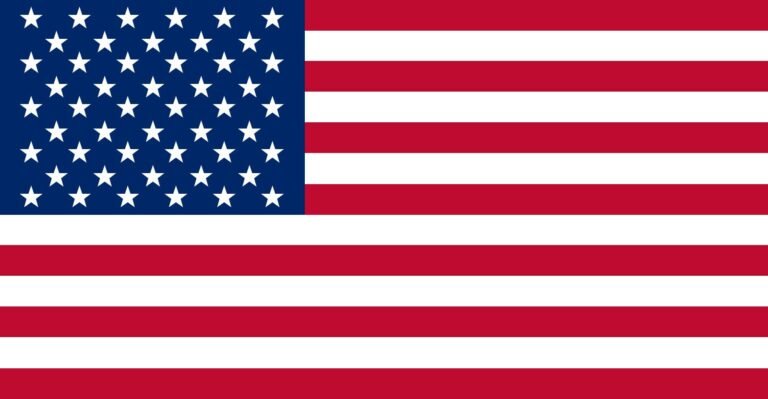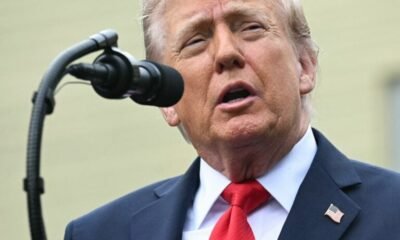READ: Biden Announces Date US Will Get Enough COVID-19 Vaccine
After a long battle with GOP lawmakers who resisted additional spending, Democrats pushed through legislation they said was essential to help struggling Americans during the Covid-19 pandemic and boost the economy’s long-term prospects. The Organization for Economic Cooperation and Development said this week that thanks to the massive relief package and rapid pace of vaccinations, it now expects the U.S. economy to recover twice as fast as previously thought.
Biden’s stimulus package coincides with the one year anniversary of the Covid-19 pandemic that stifled the U.S. economy, destroying more than 20 million jobs and tanking GDP by historic proportions. It’s the sixth relief bill from Washington since last March, the largest of which was the $2.2 trillion CARES Act. The American Rescue Plan includes $1,400 payments to eligible Americans, $300 weekly unemployment benefits, rental assistance, funding for vaccination distribution and aid for state and local governments.
“This historic legislation is about rebuilding the backbone of this country and giving people in this nation—working people and middle-class folks, the people who built the country—a fighting chance.” President Joe Biden.
All of this comes at a cost, however. Unprecedented fiscal spending during the pandemic lifted the federal budget deficit to a record $3.2 trillion last year, and this fiscal year’s budget gap is expected to grow more quickly, fueling concerns on Wall Street that rapid inflation could hurt stocks once the economic recovery kicks into overdrive. Experts predict a sizable chunk of the more than $400 billion allocated toward stimulus checks will go into the frothy stock market, particularly the speculative pockets that have dominated headlines: SPACs, meme stocks and surging tech stocks like Tesla.
READ: Democrats Unveil Biden US Immigration Reform Bill
Here’s Things you need to know.
What’s Inside
Stimulus checks
The American Rescue Plan will authorize a third round of direct payments, this time in the amount of $1,400. Individuals earning less than $75,000 per year will receive the full $1,400 payment, as will heads of household earning less than $112,500 per year and couples filing jointly earning less than $150,000. Eligible families will also receive $1,400 payments for dependents—both children and adults. The payments will phase out as income rises.
The White House says it expects those payments to hit some bank accounts as soon as this weekend.
“The last time around, flows went into more speculative areas of the market, including SPACs, Reddit stocks and high-growth momentum, so it wouldn’t surprise us to see something similar,” says Cliff Hodge, the chief investment officer at North Carolina-based Cornerstone Wealth.
$300 per week unemployment benefits
The law will extend the existing enhanced federal unemployment supplement of $300 per week through September 6. It will exempt the first $10,200 in unemployment benefits received in 2020 from tax for families earning less than $150,000 per year. Democrats had initially pushed for $400 weekly payments but were forced to lower the amount to get the support of Senator Joe Manchin, a moderate from West Virginia. The package also extends the Pandemic Unemployment Assistance program which helps freelancers, gig workers and contract workers who have lost income during the pandemic.
Child tax credit
The package also includes a major—albeit temporary—expansion of the Child Tax Credit. The new credit for 2021 will give eligible parents $3,000 for every child aged 6 to 17 and $3,600 for every child under age 6 (up from $2,000 per dependent child up to age 16). Half of that money is slated to be sent out in advance in a series of payments between July and December, and families will be able to claim the remainder on their tax returns next year. Democrats also tweaked the credit to make it more accessible to those at the lowest end of the income spectrum, and have indicated that they will try to make this year’s changes permanent.
Small businesses
The law will extend extra support for small businesses, including another $7.25 billion in funding for the popular Paycheck Protection Program, which provides forgivable loans to help small businesses cover overhead and payroll costs. The legislation does not extend the duration of the PPP, which is slated to expire on March 31. Lawmakers are expected to vote next week to extend the program for another two months, Politico reported Thursday. The new law also includes more than $20 billion in grants for bars and restaurants that have lost revenue and $15 billion for the Economic Injury Disaster Loan program, which existed before the pandemic and is designed to help small businesses and nonprofits weather disasters.
Public health
The package includes $50 billion in disaster relief funding that will be used to reimburse state and local governments for protective equipment, vaccine distribution, healthcare overtime and other costs related to combating Covid-19. There’s $48 billion for testing and contract tracing, $10 billion for manufacturing medical supplies, $8.5 billion for rural providers, and another $7.7 billion to bolster the public health workforce. The Centers for Disease Control and Prevention will also receive $7.5 billion for vaccination efforts.
What’s Not In The Bill
Minimum wage increase
Despite a weeks-long battle to include a minimum wage hike in the stimulus bill, the Democratic party’s progressive wing failed to convince the Senate parliamentarian, which studies and interprets the chamber’s rules, that doing so was appropriate. The parliamentarian ruled that the minimum wage increase failed to satisfy the Byrd Rule, which dictates that any provision passed under reconciliation (the process Democrats used to pass the bill without Republican support) must be related to the federal budget. Eight Senate Democrats voted against an effort to include the wage hike in the bill despite the ruling, and some moderates say they support an increase to $11. A new bill has yet to be crafted but House Speaker Nancy Pelosi (D-Calif.) said that the House will continue to make minimum wage a priority. Says Pelosi: “We have to raise it.”
Student loan forgiveness
Highly anticipated student loan forgiveness–one of President Biden’s major campaign promises–never made it into the president’s stimulus plan, but he still insists it’s a priority for his first 100 days, which end April 29. One provision included in the stimulus package has helped set the stage for relief: Any student loan debt canceled by the government will now be considered tax-free until January 1, 2026. Previously, the relief was considered taxable income, meaning the $10,000 loan forgiveness that Biden supports could have landed borrowers with a four-figure IRS bill.
What To Watch For
Stocks
The Dow Jones industrial average and S&P 500 ushered in the new stimulus package with record highs at the time of signing, and even the recently floundering tech-heavy Nasdaq soared on the news. “Economically speaking, it’s a shot in the arm to speed up the recovery, setting the backdrop for very strong growth in the second half of the year,” says Charlie Ripley, a senior investment strategist for Allianz Investment Management. “But stimulus eventually wears off and investors will have to be prepared to cross that bridge when it comes.”
More Stimulus
Biden is set to follow up on the American Rescue Plan with an even loftier Build Back Better proposal, which experts estimate may cost as much as $4 trillion. Though exact provisions have yet to be spelled out, the clean energy-focused initiative is expected to include funding to modernize the nation’s transportation and energy infrastructure, along with heightened big-tech regulations and corporate tax hikes. The latter will be necessary to get moderate Democrats–hesitant to sign off on more debt-laced spending–on board.
Inflation
Though they’ve taken a breather, Treasury yields soared to their highest levels since the start of the pandemic in recent weeks–a sign investors are bullish that the economy is set to recover, but also that inflation and stock market volatility could pick up as a result of heightened fiscal spending. “With global GDP output already back to pre-pandemic levels and the economy not yet even close to fully reopened, we think the risk for more acute price spikes is greater than appreciated,” Morgan Stanley strategist Michael J. Wilson said in a recent note, adding that increment that happens “quickly and without warning” remains the biggest risk to stocks this year. For now, inflation has remained in check.










































